What is the difference between fire protection and fire prevention?
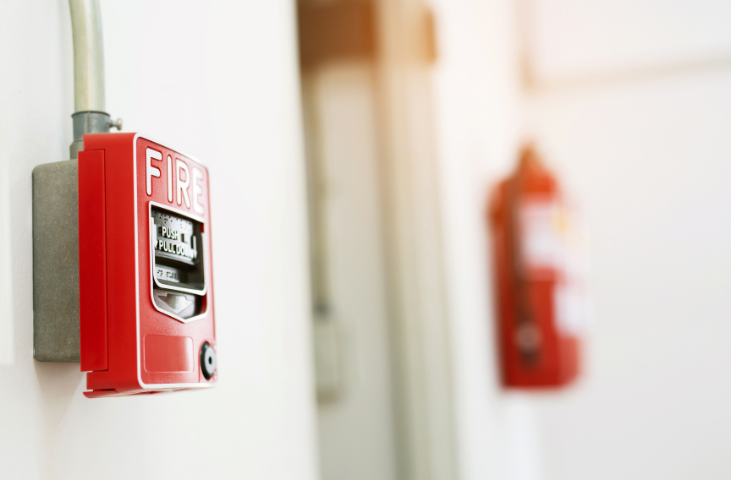
Estimated reading time: 5 minutes
Understanding the difference between fire protection and fire prevention is essential for ensuring the safety of both people and property in any residential, commercial, or industrial setting.
Both aspects are essential for a comprehensive fire safety strategy and while both terms may seem similar at first, they represent two different approaches to managing the risk of fire. Each one describes distinct strategies and measures to minimise the risk of fire and mitigate its consequences, but fire prevention is all about avoiding fires, while fire protection is about mitigating the damage caused by fires.
Remember, a holistic approach to fire safety protects lives and promotes a culture of responsibility and awareness that ultimately benefits everyone.
In addition to these two terms, there is also fire suppression. This is another fire safety strategy, where the goal is to put out a fire that has started as quickly as possible.
This article looks at each of these elements, what they entail, how they differ, and how they work together to create comprehensive fire safety systems.
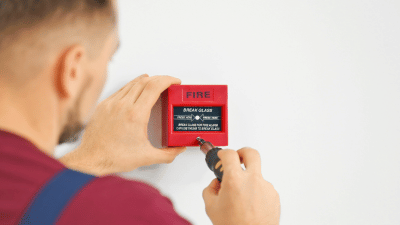
Fire prevention
Fire prevention involves taking measures to prevent fires from occurring in the first place – this means prevention systems are prepared so a building’s fire load is as low as it can possibly be. ‘Fire load’ is a term used by fire protection professionals to determine the potential severity of a fire in a building, based on the presence of certain hazards.
Prevention refers to placing down systems and processes that stop a fire from occurring in as many cases as possible. These systems are both passive and active:
- Active systems are initiated when a fire starts and they help fight it. They include fire alarms and sprinklers.
- Passive fire protection systems are structural measures designed to contain a fire and prevent flames and smoke from spreading. These include fire doors, fire barriers, and any measure that keeps exit routes safe and accessible.
Other fire prevention measures include:
- Regular inspection of electrical systems, heating equipment, and appliances.
- Enforcing anti-smoking policies and designated smoking areas.
- Proper storage and handling of flammable materials and chemicals.
- Implementing fire safety training and educating people about the dangers of fire and how to reduce the risk of a fire occurring.
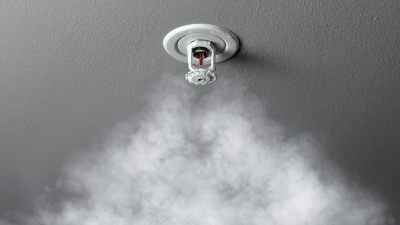
Fire protection
Fire protection involves taking measures to minimise the damage caused by a fire once it has started. Often these measures are implemented during the design stages of a new building. The aim of a fire protection system is to protect a building’s occupants and minimise the damage associated with fire.
Overall, the goal is to provide the widest possible window for a safe evacuation, whilst also reducing potential repair costs.
Like prevention, fire protection consists of both passive and active systems:
- Active systems are engaged in the event of a fire and are designed to help fight it. Examples include sprinklers, installing and maintaining smoke detectors, and fire alarms.
- Passive fire protection systems are structural measures designed to contain a fire and prevent flames and smoke from spreading. Passive examples include compartmentalisation to keep fire or smoke contained to a certain area. This can be seen in applications like fire doors and cavities. On top of this, constructing buildings with fire-resistant materials and fire barriers (in the wake of the Grenfell Tower fire) which absorb heat can help keep fire from spreading into an evacuation route.
Other fire protection measures include:
- Providing fire extinguishers at key points in the building.
- Practicing emergency evacuation plans and fire drills.
- Ensuring that fire exits are clearly marked and accessible.
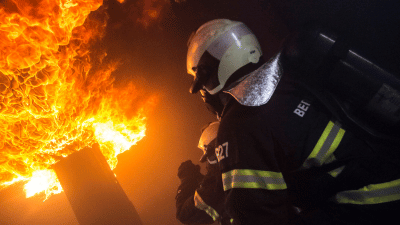
Fire suppression
So, fire prevention aims to reduce the risks of a fire, and fire protection is designed to protect occupants and the building from harm. What is the goal of fire suppression then? The answer is that suppression is meant to put out and keep the building standing while minimising damage.
Fire suppression systems are considered active as they are triggered by the presence of a fire. They are connected to a detection system and are activated when they detect a fire through smoke, heat, or both. Examples of suppression include fire sprinkler systems that douse the fire with water.
In some fires, however, water will not be effective in putting them out. If the fire is electrical or involves flammable gas/metal or grease/oils, then other types of agents should be used to extinguish the fire: such as carbon dioxide, dry chemicals, or foam water.
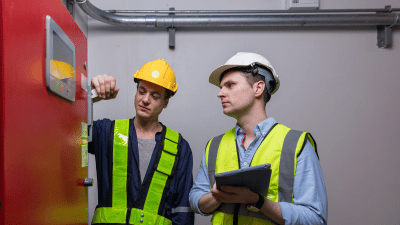
Conclusion
It is important to remember that fire prevention, fire protection and fire suppression systems are essential for a comprehensive fire safety strategy. These systems must be implemented and maintained in any residential, commercial, or industrial setting.
If you want to learn more about fire prevention and protection through our range of courses, you can get in touch with our friendly customer service team by calling us on 01327 552160, email us at hello@smarthorizons.co.uk, or use the live chat feature on this website to speak to us during office hours.
